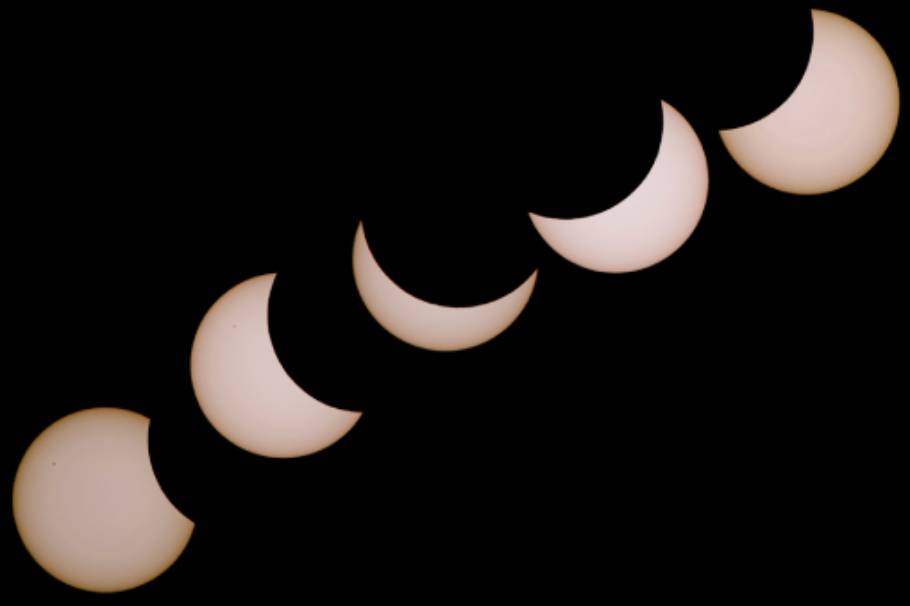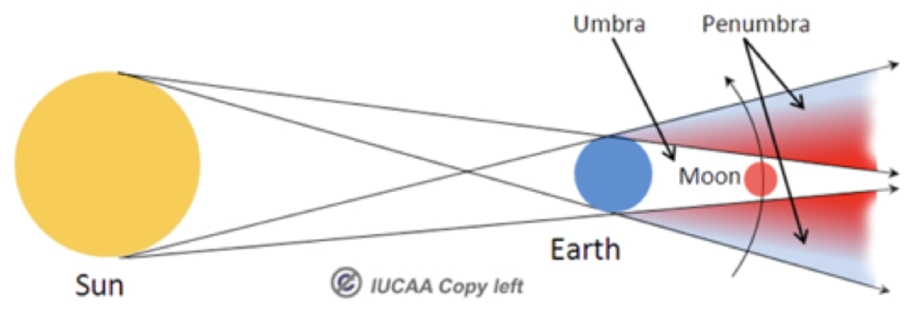
- Home
- News
- Analysis
- States
- Perspective
- Videos
- Education
- Entertainment
- Elections
- World Cup 2023
- Features
- Health
- Budget 2024-25
- Business
- Series
- NEET TANGLE
- Economy Series
- Earth Day
- Kashmir’s Frozen Turbulence
- India@75
- The legend of Ramjanmabhoomi
- Liberalisation@30
- How to tame a dragon
- Celebrating biodiversity
- Farm Matters
- 50 days of solitude
- Bringing Migrants Home
- Budget 2020
- Jharkhand Votes
- The Federal Investigates
- The Federal Impact
- Vanishing Sand
- Gandhi @ 150
- Andhra Today
- Field report
- Operation Gulmarg
- Pandemic @1 Mn in India
- The Federal Year-End
- The Zero Year
- Premium
- Science
- Brand studio
- Home
- NewsNews
- Analysis
- StatesStates
- PerspectivePerspective
- VideosVideos
- Entertainment
- ElectionsElections
- Sports
- Loading...
Sports - Features
- Budget 2024-25
- BusinessBusiness
- Premium
- Loading...
Premium

As virus eclipses life, get set for a shadow play between sun and moon
The earth is set to eclipse the moon from the sun’s glare on the night of June 5, and it will be the second lunar eclipse this year.

The earth is set to eclipse the moon from the sun’s glare on the night of June 5, and it will be the second lunar eclipse this year. Moon watchers will be able to see the earth’s shadow fall on the moon’s surface for about three hours from parts of Europe, central and western Africa, most of Asia and Australia. Here are 10 things to know about the eclipse. 1. A penumbral...
The earth is set to eclipse the moon from the sun’s glare on the night of June 5, and it will be the second lunar eclipse this year. Moon watchers will be able to see the earth’s shadow fall on the moon’s surface for about three hours from parts of Europe, central and western Africa, most of Asia and Australia. Here are 10 things to know about the eclipse.
1. A penumbral eclipse will commence on June 5, 2020, at 23:13 and end at 02:36 on June 6, 2020. The maximum eclipse will take place at 00:55 on June 6, 2020. About 59% of the moon will be covered by the penumbral shadow of the earth at the instance of maximum eclipse. This is the second lunar eclipse this year; the first one took place on January 10, 2020.
2. Eclipses are a shadow play between the sun and the moon. The popular purānic myth of demons Rāhu and Ketu causing eclipses was challenged by Āryabhaṭa (476–550 CE), a towering figure in Indian astronomy. He propounded the scientific theory of eclipses and established that when the sun, earth and the moon are in the same plane and in that order, earth’s shadow falls on the moon, causing a lunar eclipse.
Likewise, he said that the solar eclipse takes place when the moon is in between the sun and the earth. Hence, Āryabhaṭa said, lunar eclipses occur only on a Poornima day when the sun and the moon are on opposite sides of the earth. Further, he said, that the solar eclipse occurs only on Amavasya day when both are on the same side of the earth.
3. Hold a one-rupee coin against the light. Look at the shadow cast by it. We can easily see that the central part of the shadow is dark and dense, but towards the edge, you can see the light and a diffused shadow. The darker and lighter areas of the shadow are called Umbra and Penumbra regions. The earth too casts both umbral and penumbral shadows.
When the earth’s umbra obscures all of the moon’s surface, we have a total lunar eclipse. A partial lunar eclipse occurs when a part of the moon is covered by the umbral region of the earth’s shadow. If the path of the moon crosses only the diffused outer shadow of the earth, the penumbra, we have a penumbral lunar eclipse. At times, the moon may just graze over the penumbral shadow, resulting in a partial penumbral lunar eclipse.

4. The penumbral lunar eclipse is so subtle that it is not easy to notice it like the total or partial eclipse of the moon. There is never a dark bite taken out of the moon, as in a partial eclipse. There are no dramatic minutes of totality when the whole of the moon shines in blood red.
At best, at mid-eclipse, when it is maximum, a careful observer would notice a dash of dark shading. Therefore, many do not even consider a penumbral eclipse as a true eclipse of the moon in the ordinary sense. Only an attentive observer will be able to observe that the southern half of the lunar disk looks a little dusky on the night of June 5, 2020.
5. The plane containing the orbit of the earth around the sun is called the plane of the ecliptic. The path of the moon around the earth is tilted about 5.2 degrees to the ecliptic. Thus, there are only two points at which the orbit of the moon will intersect the ecliptic plane. These points are called ‘nodes’.
Most of the time, the moon is above or below the ecliptic plane. Eclipses only happen near the time when the moon crosses the ecliptic plane, an alignment that occurs twice each year. Each of these lunar eclipse seasons lasts approximately 34 days and repeats at about 173-day intervals. However, for the solar eclipse, the season lasts only for about two weeks, with a 173-day interval.

6. The lunar eclipse on June 5, 2020, happens to take place at the commencement of the eclipse season. Therefore, after 30 days, when the next full moon takes place, the eclipse season still lingers. Hence, during the next Poornima, that is on July 4-5, 2020, we again have a penumbral eclipse!
7. Between these two Poornimas, we have an Amavasya that takes place on June 21, 2020. As the moon is nearer to the ecliptic plane during this whole period, the sun, moon and the earth will be aligned in a straight line. The result is a solar eclipse. On June 21, 2020, an annular solar eclipse will take place, which will be visible from parts of India. In the remaining portion of India, we will be able to see the partial eclipse of the sun. If we miss this, we have to wait for another 11 years to see a solar eclipse in India.
8. The moon shines with the reflected light of the sun and is not that bright to cause any discomfort to the eye. Hence we can look at a lunar eclipse with the naked eye. It is entirely safe to watch a lunar eclipse, and no special equipment is needed to see it. Due to the brightness of the sun, one should take precautions while watching a solar eclipse.
9. It is perfectly safe to eat during an eclipse, and for pregnant women to witness the incredible celestial show. Indian astronomers like Lallacharya (720 CE, present-day Gujarat) squarely rejected the false notions of Rahu/Ketu.
In his famous work sishyadhi-vruddhi-tantra, he rightly argued that while at one place on earth we see the sun eclipsed, there are places on the globe where the sun shines uneclipsed. If indeed Rahu had swallowed the sun at the time of the solar eclipse, then the sun should have been invisible all over the world. Pseudoscience, superstitions are the bane of society.
10. This year, there are six eclipses, four eclipses of the moon and two eclipses of the sun. All four lunar eclipses are penumbral. The first two on January 10 and June 5 are visible in India, and the next two on July 4 and November 29 are not visible from India. Of the two solar eclipses, the first one June 21, 2020, is an annular solar eclipse, popularly called a ‘ring eclipse’. This would be visible as a partial eclipse all over India.
The second will be a total solar eclipse that would take place on December 14, 2020, but would not be visible from India. In 1941, there were four penumbral eclipses and two solar eclipses, like this year.
(The author is a science communicator with Vigyan Prasar)

